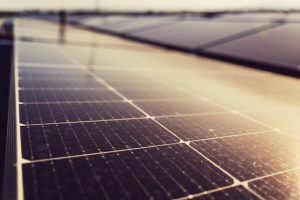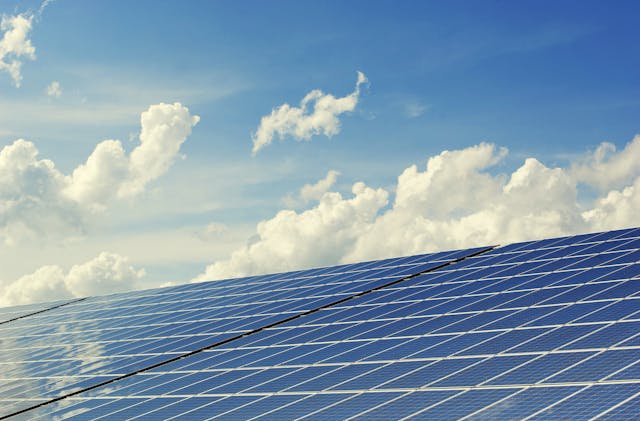Introduction
Energy efficiency in homes has become more than just a trend—it’s a smart way to save money, reduce your environmental footprint, and create a more comfortable living space. Whether you live in a small apartment or a large family home, there are numerous strategies to improve energy efficiency without compromising on comfort or lifestyle. In this guide, we’ll explore practical tips, tools, and lifestyle changes that can help you make your home more energy-efficient.
How to Make Your Home More Energy Efficient

1. Upgrade Your Insulation
A well-insulated home is one of the most effective ways to reduce energy consumption. Heat can escape through walls, roofs, windows, and floors, making your heating system work harder in winter and your cooling system struggle in summer.
- Walls and Attics: Check for gaps, cracks, or insufficient insulation in walls and attics. Adding extra insulation can significantly reduce energy bills.
- Windows and Doors: Seal leaks with weatherstripping or caulk. Double-glazed windows provide better insulation than single-pane windows.
- Floors: Consider insulating floors above unheated spaces such as basements or crawl spaces.
Proper insulation not only conserves energy but also improves indoor comfort year-round.
2. Optimize Heating and Cooling Systems
Heating and cooling account for a major portion of home energy usage. Small adjustments can make a big difference.
- Programmable Thermostats: Set your thermostat to adjust automatically when you’re away or asleep. Even a 1–2°C reduction in winter or increase in summer can save significant energy.
- Regular Maintenance: Clean filters, inspect ducts, and schedule routine maintenance to ensure your system runs efficiently.
- Zoning: If possible, install systems that allow different temperatures in different rooms. You won’t waste energy heating or cooling unused areas.
- Ceiling Fans: Fans can circulate air, helping you feel cooler in summer and pushing warm air down in winter
3. Switch to Energy-Efficient Appliances
Appliances consume a large share of household energy. Choosing energy-efficient models can reduce electricity usage and save money in the long run.
- Refrigerators and Freezers: Look for the highest energy rating. Ensure proper sealing of doors.
- Lighting: Replace incandescent bulbs with LED or CF
- L alternatives. They use less power and last longer.
- Laundry: Wash clothes in cold water when possible and air-dry instead of using a dryer.
- Cooking Appliances: Induction stoves and convection ovens are more efficient than traditional electric models.
Paying attention to energy ratings can make a noticeable impact over time.
4. Reduce Water Heating Costs
Water heating is another major energy expense in homes. Improving efficiency in this area can have substantial benefits.
- Low-Flow Fixtures: Install low-flow showerheads and faucets to reduce water usage.
- Insulate Water Heaters: Wrapping your water heater with insulation reduces heat loss.
- Temperature Settings: Lower your water heater temperature to around 50–55°C (120–130°F) to save energy without compromising comfort.
- Tankless Water Heaters: Consider on-demand systems that only heat water when needed.
5. Improve Lighting Efficiency
Lighting accounts for a significant portion of household electricity use. Beyond switching to LEDs, consider:
- Natural Light: Use curtains, blinds, and skylights to maximize natural light during the day.
- Smart Controls: Motion sensors and timers ensure lights are on only when needed.
- Task Lighting: Instead of lighting an entire room, use focused lights for reading or cooking tasks.
By combining natural light with smart lighting, you can drastically reduce electricity consumption.
6. Implement Smart Home Technology
Smart home devices are a modern way to increase energy efficiency without sacrificing convenience.
- Smart Thermostats: Adjust temperature settings automatically and track energy use.
- Smart Plugs: Turn off devices remotely or set schedules to avoid phantom energy usage.
- Energy Monitoring Systems: Identify high-energy devices and habits, helping you make informed adjustments.
Technology provides actionable insights that help reduce waste and save money.
7. Reduce Energy Waste
Small behavioral changes can complement technological improvements.
- Unplug Devices: Many electronics consume energy even when off. Unplug chargers, TVs, and computers when not in use.
- Limit Standby Mode: Use power strips to turn off multiple devices simultaneously.
- Close Doors and Windows: Avoid unnecessary heating or cooling losses by keeping doors and windows closed when systems are running.
- Cook Smart: Cover pots when boiling water and use lids when simmering food to retain heat.
Over time, these small habits can add up to significant energy savings.
8. Explore Renewable Energy Options
Incorporating renewable energy is one of the most effective ways to make a home energy-efficient. For example, a solar panel installation services can help generate electricity from sunlight, reducing reliance on the grid and lowering energy bills. Solar solutions have become increasingly accessible, offering both residential and commercial homeowners a cost-effective way to embrace clean energy.
9. Landscaping and Exterior Efficiency
Your home’s exterior can also affect energy efficiency. Thoughtful landscaping reduces heating and cooling needs:
- Shade Trees: Plant deciduous trees near windows to block summer sun while allowing winter sunlight.
- Windbreaks: Shrubs or fences can reduce wind exposure, lowering heating costs.
- Reflective Roofing: Lighter-colored or reflective materials minimize heat absorption in summer.
- Insulated Garage Doors: Prevent heat loss in connected garages that affect indoor temperatures.
These exterior improvements are long-term investments that enhance energy efficiency and comfort.
10. Monitor and Adjust Over Time
Finally, energy efficiency is an ongoing process. Regularly monitor your energy bills and household usage to see what’s working and where you can improve. Small adjustments, like turning off unused lights or updating appliances, can compound over time to produce noticeable savings.
Conclusion
Making your home more energy-efficient doesn’t have to be overwhelming. By combining proper insulation, energy-smart appliances, water-saving measures, behavioral changes, and renewable energy solutions, you can reduce energy consumption, save money, and contribute positively to the environment. Whether you’re upgrading heating systems, installing smart home technology, or exploring solar energy, every step toward efficiency counts.
A proactive approach to energy management not only reduces costs but also increases comfort and sustainability, creating a home that works for you and the planet. Start with small, manageable changes, and gradually implement larger solutions like renewable energy to maximize impact.












